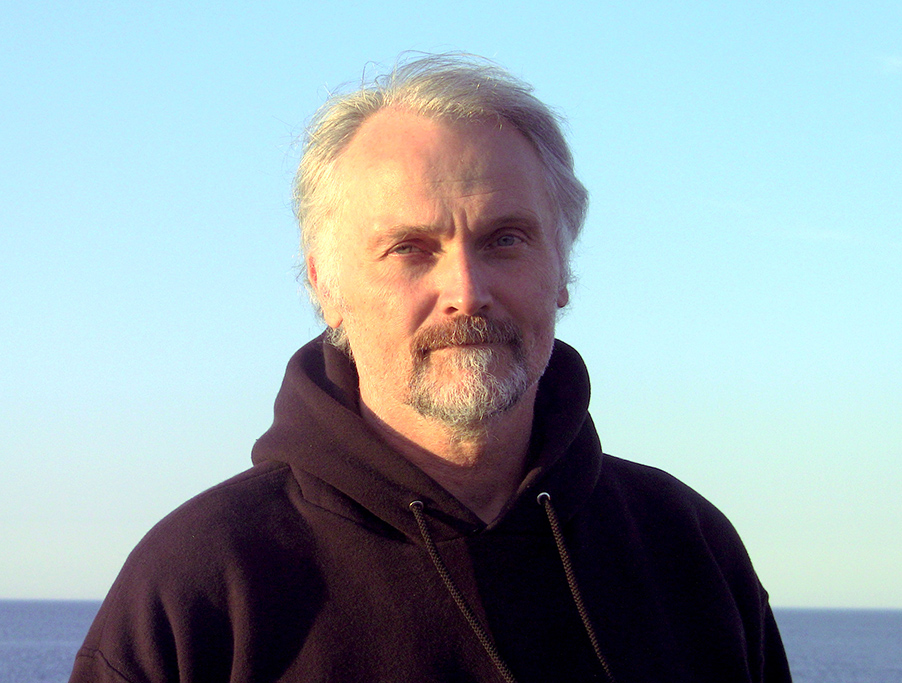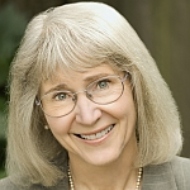Greenland melting? Public officials lying? Endangered species dying? Who you gonna call to document—and raise hell—about these and other environmental outrages?
The overwhelming choice would be videographer Peter Sinclair, one of this year's winners of NCSE's Friend of the Planet award. Via his Climate Denial Crock of the Week and other online venues, Sinclair's pointed, critical, and entertaining videos pummel the powerful, expose climate change denial, and ask the hard questions. His hundreds of videos have been seen by millions of people around the world. Sinclair has been called “the most important videographer on the planet.”
How did Peter Sinclair attain his lofty perch? Here's his story in his own words.
I was more or less born into environmental awareness.
When I was growing up, my parents were questioning the wisdom of siting a large dual-unit nuclear power plant inside the city limits of our small Midwestern town. The fight attracted national  attention, reaching the pages of The Wall Street Journal and The New York Times, and even inciting a 60 Minutes investigation—a CBS crew with Ed Bradley showed up in our living room.
attention, reaching the pages of The Wall Street Journal and The New York Times, and even inciting a 60 Minutes investigation—a CBS crew with Ed Bradley showed up in our living room.
Because I followed the controversy in private meetings and public proceedings right up to the Supreme Court, I got a good education in the politics and economics of energy. I stayed current as an adult, becoming increasingly concerned in the 1980s as I followed Jim Hansen’s findings at NASA, and began to appreciate the scope of the problem of global climate change.
When Hansen testified in 1988 before Congress, on my birthday as it turned out, that the signal of human responsibility for global climate change could now be detected, I knew that this was the granddaddy of all environmental issues, something that could no longer be put off.
At the time, I was working as a graphic artist and cartoonist, so I launched a comic strip with environmental themes, which was, for a time, syndicated internationally. Although it had an intense cult following, the strip may have been ahead of its time, and it fell out of syndication.
Following the advice of friends, I got involved in the internet in the early ’90s, and began posting the comic online, where it again found an audience. I learned the ins and outs of online media, simple animation, and other skills.
Working as a creative person in a small Midwestern town is not always a stable way to make a living. Fortunately, after graduating from the
Over the years, I upgraded my training by becoming a registered nurse. I continue today to work part-time, enough to keep my skills and license current, and to maintain confidence that if all else fails, I can continue to stay productive in climate media and education.
Watching the decline of environmental journalism over the last ten years, I feel fortunate to have a fallback, and some independence in pursuing the topics I feel passionate about. A lot of great journalists have been badly hurt in the new media environment we find ourselves in.
Around 2006, especially after watching An Inconvenient Truth, I reached a peak of frustration at how the science of climate change was being distorted and poorly communicated in the media, especially online, where scientists were clearly taking a beating. I thought that, with my skills as a writer and graphic communicator, I could make a contribution. I was invited to attend a training seminar with Al Gore in
After a few years climbing a steep learning curve, I launched my online video series, Climate Denial Crock of the Week. The series became quite popular for clarifying and dispelling misinformation and distortions in a somewhat sarcastic, sometimes funny, but always rigorously factual style.
I created a blog of the same name to provide daily updates for a fanatical group of viewers, and I’m very proud to be followed by some of the most well-known names in climate science and media.
A few years later I was invited to become a contributor to the Yale Climate Connections blog, for which I produce a monthly series entitled “This is Not Cool.”
In the last five years, I’ve been fortunate enough to be invited to follow scientists into the field. (I have managed to support that work through online crowdfunding.) Initially I followed Mauri Pelto to the Cascade Glaciers of northern
Shortly thereafter, I was invited by Jason Box, a well-known glaciologist now with the Danish Geological Survey, to help him crowdfund a trip to the Greenland Ice Sheet to study the enhanced darkening and melting of the ice there.
Since then I’ve been to the Arctic four times, and have conducted numerous interviews with climate scientists in the field and at conferences from Scandinavia to
I continue to hear from teachers around the world who use my videos to teach classes right up through the graduate level. Journalists follow the series to keep up on current research, and the latest controversies. I’ve even heard from Capitol Hill staffers who follow the series in order to inform themselves and prepare to participate in the ongoing political dialogue.
In 2016, I was extremely pleased that one of my videos was attacked by the Breitbart News website, then run by Steve Bannon, who is now White House Chief Strategist—one more indication that the videos are hitting the right targets.
Motivation is not a problem for me, although sleep sometimes is. With two grown children, my passion for preserving a livable climate for them, for humanity, and for all the species we share the planet with is undiminished, and only grows as I spend more time in regions where climate impacts are most visible.
In the near future, I’ll be cooperating with the Arctic Monitoring and Research Program in

